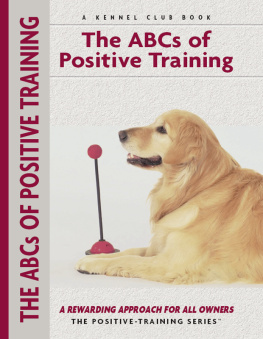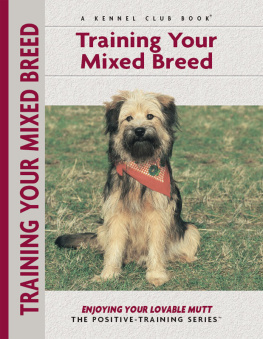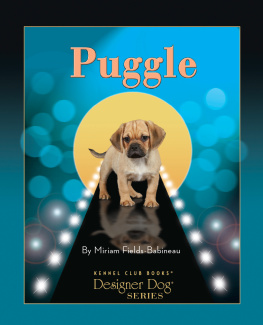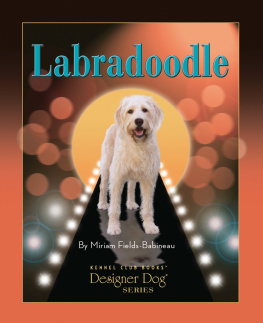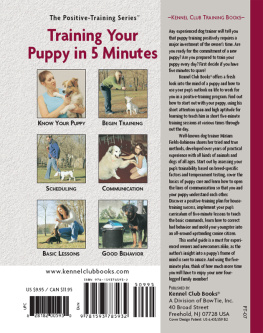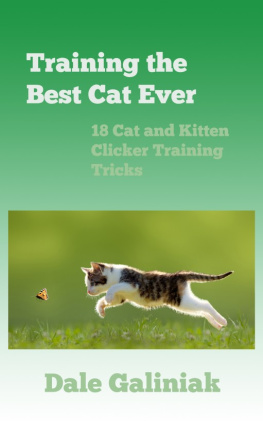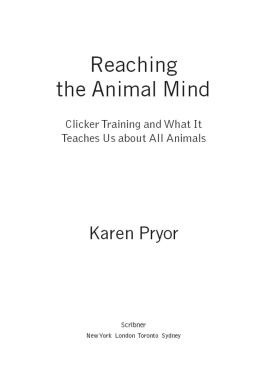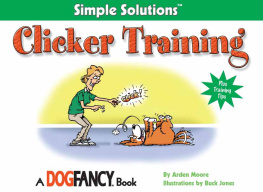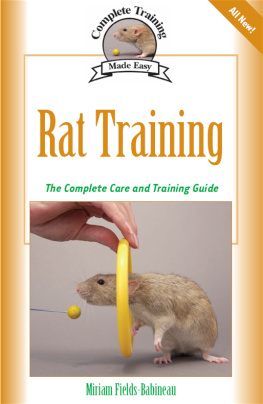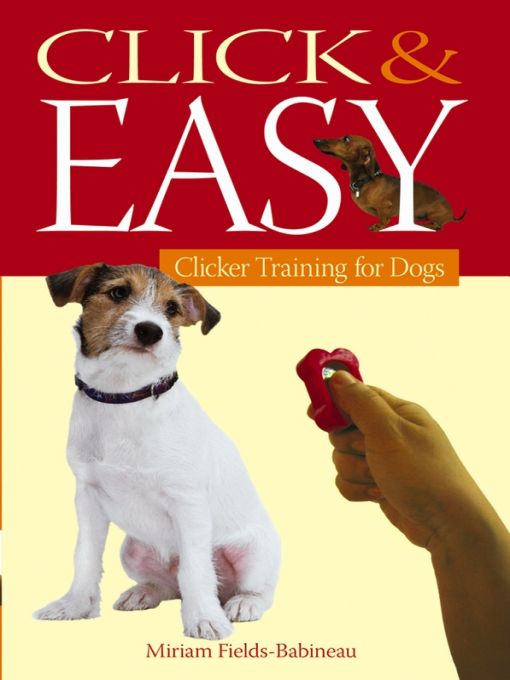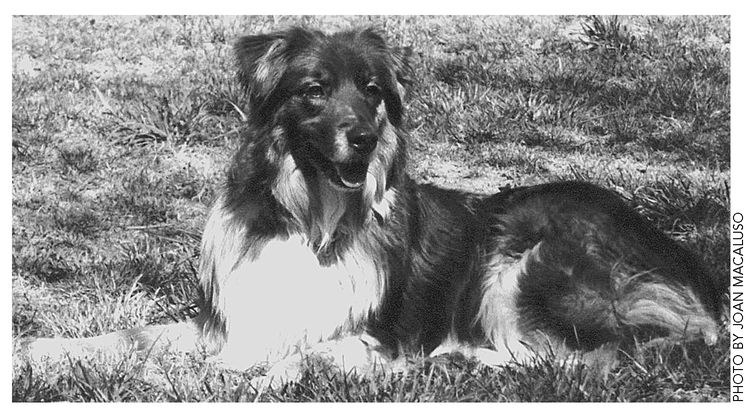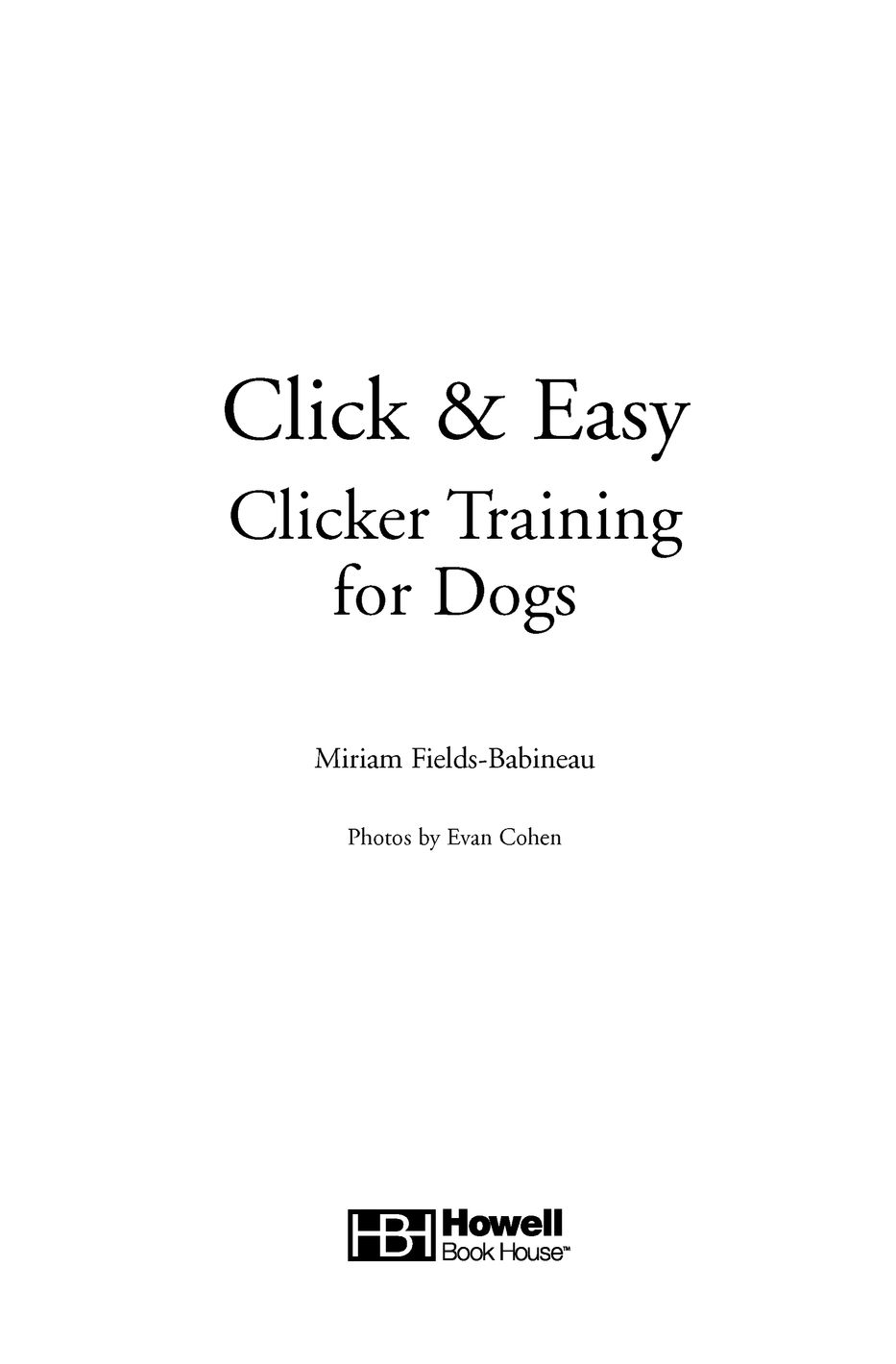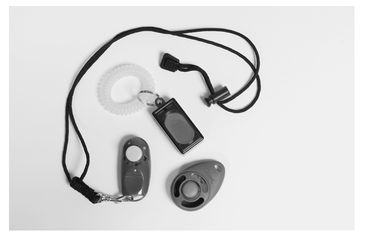Table of Contents
For Teddy, the Australian Shepherd for whom the every dog in this book is named.
Acknowledgments
I want to thank all those who have helped in bringing this book to press, including my first line editor, Joan Macaluso, a longtime friend who was a client and is Teddys companion; my wonderful editor at Howell Book House, Beth Adelman, who has given me encouragement and, from time to time, put the fire under my rear end to keep me going; my acquisitions editor, Pam Mourouzis, for taking a chance on me; my photographer, Evan Cohen, who keeps getting better and better at putting my thoughts and writing into a spectacular visual format; and my great dogs and companions, Peaches and Princess, who are constantly teaching me how to be a better trainer.
Introduction
I once trained dogs using coercion and force. This is the method I first learned when I became a trainer. Barbara Woodhouse was the big thing in the early 1980s. Her Walkies method, with her special jingling choke chain, was very popular with both dog trainers and owners. I used the choke chain for the correcting sound it made, and my voice to guide and communicate.
As I gained experience and new tools became available, I gradually changed my dog training approach. In the early 90s head halters gained popularity. A wonderful trainer introduced me to the tool and its appropriate use. I loved the concept of teaching the dog in a way he understands; however, this method was still a means of coercion because I used it to make the dog do what I wished. Yes, I still used my voice and visual cues to communicate in much the same way as when I used a choke chain. Because dogs need time to get used to a head halter, I used food to lure and teach before using the head halter as a tool to reinforce lessons.
Dogs are social animals and wish only to remain within their social environment. Dogs will do what they must to conform to that environmenttheir social pack. Hence, when they are forced to work through pain or fear, or even when they are lured with food, they respond. The response may not be, Hey, Im happy to work for you. Any time! Yet they still perform, more out of fear of the consequences than the pure desire to work.
The theory behind clicker training has been around since the early part of the nineteenth century. It was introduced by several behavioral researchers who sought to understand the learning process. They asked, Do we learn best through imitation or association? Do we remember better with reinforcement or with punishment?
Overall, the outcome of all the research was the development of operant conditioning (any procedure in which a behavior is made stronger or weaker by its consequences) as a tool to train any animal of any temperament, wild or domestic. Clicker training is one method that implements the principles of operant conditioning, using positive rewards to reinforce desired behaviors.
Most dog trainers want to learn the science behind a training approach in order to fully understand it. This is a very necessary education, as we must transfer our knowledge to others. There are many books currently on the market that fulfill this need.
This is a book for dog owners who wish to use a positive approach to dog training but do not wish to learn the science behind the method. Its written for people who simply want to see quick results. There will be little scientific terminology, and no history of clicker use or other psychological discussions that can get confusing. Instead, I will explain how to train a dog using a clicker, step by step, so that anyonedog owner, new dog trainer, or experienced dog trainercan easily understand and implement these methods.
Clicker training zeroes in on changing behavior, not changing the animal. It provides a clear and immediate consequence. Once understood, the method is fast, easy and, best of all, positive.
As I crossed over from traditional training to clicker training, I became enlightened. Not only did I learn how to reward the dog for doing something right instead of punishing him for doing something wrong, but I realized that this approach transfers to everyday living. It teaches us to look for the positive things in life: Reward the good things you see in both your pet and your family, because whatever is rewarded will be strengthened. Ignore the wrong behavior, because it is merely a means of garnering attention. What you ignore will fade away.
As you learn how to clicker train your dog, I hope you will also become enlightened to how much your dog can learn in a short period of time. There are no boundaries as far as abilities, age, or breed. Any dog can learn anything you wish to take the time to teach.
So, with a little imagination and a lot of patience...
Here we go!
Chapter 1
Get Clicked
Before you begin clicker training, you need to understand the underlying principles that make the clicker so effective. This knowledge will help you understand how to use the clicker and your dog learn how to react to it.
Basically, you will need to know three things:
1. What a clicker is and how it works
2. The effect this tool has on your dog and how it is used in the training process
3. How to use vocal tones and visual cues while training with a clicker
Understanding the ideas behind clicker training will also help you learn where and when clickers can be used in everyday canine activities. Clicker training is not just for basic obedience or problem solving. This tool is also used to teach working dogs their performance patterns. It opens up their ability to reason their way through obstacles and solve problems, as they figure out which behaviors would be rewarding and which will not.
WHAT IS A CLICKER?
A clicker is a noise-making device that was once a childs toy. The old ones are made entirely of metal and were often designed in bright colors and pleasing shapes, such as animals. To make the clicking noise, a flexible metal tongue in the middle is pressed down onto another piece of metal. The sound is best if the piece of metal is pressed and released quickly.
Clickers are currently made of plastic rectangular or oval boxes with a flexible metal piece in the middle that makes a distinctive sound. Clicker training has become so popular that you can obtain a clicker at most pet supply shops or from many catalogs and online stores.
A variety of clickers.
Even though they are mass-produced, each clicker has its own unique sound. Because dogs can hear far better than humans, they can tell the difference, no matter how slight. That means in a class full of dogs and clicker trainers, your dog can still pick out the sound of your clicker.
It also means a clicker does not need to be used directly under a dogs nose. In fact, its best not to point it at the dog at all. You can keep it behind your back or in a pocket. A muffled click is easier to accept than a loud, sharp click. Some dogs are easily frightened by loud noises, and clicking under their noses will disrupt the learning processes.



